There are countless reasons why one may decide to train in martial arts. That said, one of the top and most common reasons is so that they can learn moves that can protect them from harm – or even potentially save their life one day. Most especially those that want to join the military. Its gonna be easy for you if you have any martial art skills in handy.
If you are interested in taking up a martial arts discipline for its self-defense techniques, it’s crucial to understand that they are not cut from the same cloth. In other words, some martial arts disciplines are definitely more effective than others in fending off violent physical attacks.
As a bonus, we’ve included short anecdotes of those who have experienced and/or witnessed the effectiveness of martial arts practice in real life situations. We hope that their insights will help you to decide on which discipline you ought to pursue. Read on!
KARATE
Developed in Ryukyu Islands (now known as Okinawa), Karate was brought to mainland Japan in the 20th century. After World War II, Okinawa became one of the most important US military bases and became popular among American soldiers. This martial arts discipline has since been widely practiced around the globe. Recently, it was also announced to be included in the upcoming 2020 Tokyo Olympics summer games.
Translated as ‘empty hand’ in English, Karate is a predominantly striking art that makes use of punching, kicking, knee & elbow strikes as well as open hand techniques such as palm-heel strikes and spear hands. It emphasizes using the practitioner’s hands and legs as main forms of defense, making it one of the most effective to use for self-defense.

Image credit: Islandeye.co.uk
Michael Miller of Millers Dojo and a 5th Degree Black Belt Karateka shares his story:
“For five years I worked as a bouncer at a sports bar on weekends. One night, I grabbed a guy who started a fight by putting my right arm around his neck into a rear naked choke position. It broke his balance by putting my left hand in the small of his back and applied some pressure. By breaking his balance I was able to escort him to the door and get him outside. Just after I let him go I saw someone in the corner of my eye throw a haymaker punch at me so I ducked under it, grabbed the guy, slammed him up against the building and put my forearm in his throat. Since I had stopped his attack, I let him go. He was no longer a threat. Just as I did, he grabbed me by my upper arms and tried to swing me around and throw me to the ground. I ended up hitting him with six different rapid hand strikes – in both shoulders, both biceps, and both forearms which got him to let go of me, and I finished with a rear leg front kick to his groin which ended the attack.”
Michael also adds that should you decide to train in Karate, the most important aspect of your self-defense practice is to get as good as you can at the basics. Seek to master Karate’s fundamentals (stances, blocks, kicks, punches, hand strikes, etc.). Train them hard and often.
KEYSI FIGHTING METHOD
The ‘youngest’ of all martial arts disciplines on this list, Keysi Fighting Method (KFM) was created by Justo Dieguez and Andy Norman. If you are impressed with Batman’s fighting style in Christopher Nolan’s ‘Dark Night’ trilogies, you have these two fighters to thank.
Basing the techniques on moves used on Dieguez’s personal street brawl experiences back in Spain, it focuses on moves that can effectively fend off multiple attackers. On an interview with BodyBuilding.com, Justo explained “KFM is a pure blood born street fighting method that was conceived on the street and born in the fight.”
Similar to Muay Thai, it emphasizes on using the body as a weapon. With the understanding that many street attacks occur in close-quarters, what makes this style unique is that it consists of no kicks. Rather, it is designed to attack with sharp elbow strikes, head butts and hammer fists which often can be more lethal than kicks or punches in real life situations.
Keysi Fighting Method demo clip from ‘Batman Begins’. Video credit: ChaosEntRETURNS YouTube Account
“If a person wants to hurt you they are likely to do so with a crowd or with others. This is basic ‘pack mentality ‘and it is a successful ploy to use. So KFM does what no other martial art has done. It places this at the center of its training, "Ok. We are surrounded by a group now let’s see how we can survive". This mentality produces a great set of tools and training drills.
One thing that I do feel that is underestimated in the KFM training and hard to put into words is that there training cultivates 'fighting spirit'. They call this the predator/ prey mentality and their drills develop this attitude to get you press the 'switch' in your mind that stops you thinking that you will become a victim and turns you into a ball of energy that is ready to fight.” – Andrew Holland of selfdefenceexpert.com
BRAZILIAN JIU-JITSU (BJJ)
Created by the Gracie family, BJJ first came into ‘fame’ due to the first Ultimate Fighting Championship (UFC) competition where Royce Gracie was able to successfully defeated his opponents by only using BJJ techniques. Fast forward to today, BJJ is still the most popular martial arts discipline amongst Mixed Martial Arts (MMA) fighters.
This martial arts discipline focuses on teaching its practitioners to effectively defend themselves against a larger sized opponent using leverage and proper technique. Hence, it is as lethal when practiced by females as it is for males.
By combining modified moves found in Judo and Japanese JuJutsu, the key to this martial arts style is to gain control and positioning over the adversary so that its devastating chokes, holds, locks and joint manipulations can be applied.
“I had been studying Judo all throughout high school. During my senior year, I went to a concert at a large outdoor amphitheater. There was a guy next to me who kept slamming into me because he was trying to get a mosh pit going. The third time it happened, I gently grabbed his shoulder to get his attention.
I went back to trying to watch the show when I caught him moving towards me quick in my peripheral vision. Right as he approached I took a step backward and blocked his ankle as he went past. He fell to the grass in a flailing heap. When he got up he was pissed and threw a wild punch. I blocked the punch with my left forearm as I stepped in with my left foot, grabbed his shirt at his left shoulder with my right hand then stepped around his right leg with my right leg and threw him to the ground using O Soto Gari.
I grabbed onto his right wrist with my left hand during the throw for two reasons:
First, I could pull up on his arm so he didn't hit the ground full force after the throw. I also had him on the ground with his wrist in my hand so I could control him with it so he couldn't come at me again. I applied pressure to his wrist to make him realize his situation and asked him to let me enjoy the show. He finally got the picture and agreed to leave me alone.” – Unknown (Sourced from a Quora forum)
TAEKWONDO
Recognized as an official Olympic sport since 2000, Taekwondo is a Korean martial arts discipline that combined many different martial arts styles which existed in Korea as well as some martial arts practices from neighboring countries. Some examples include but not limited to T’ang-su, Tae Kwon, Judo, Karate and Kung Fu.
Taekwondo is currently one of the world’s most practiced martial arts with over 25 million practitioners spread across 140 countries. Despite its popularity, due to its ‘flashy’ showmanship, Taekwondo is often criticized as less than practical when it comes to self-defense.
That said, many of its practitioners would quickly refute this criticism. One reason is that more so that many other martial arts, it emphasizes kicking – more specifically high kicking. This move can be useful in a physical fight. If the practitioner can train their legs to be stronger and as fast as their arms, the kick can enable them to neutralize the opponent quickly and effectively end the attack.
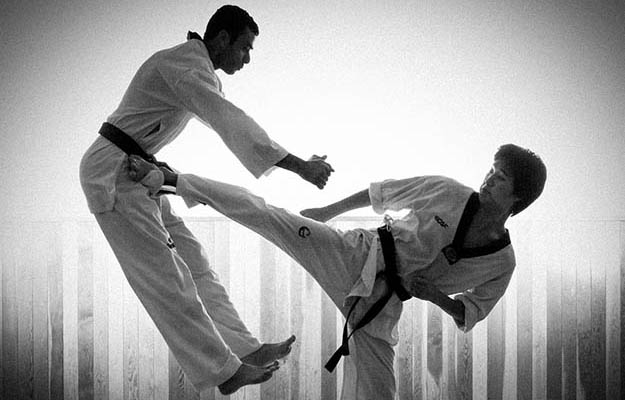
Image credit: Survivallife.com
“In self-defense, I think, one of the most effective technique is the middle front kick. Of course, this means kick in the groin. This is the easiest kicking technique. And with those great variations of practicing method of kicking in Taekwondo, make it even easier to release the attack even under assault.” – Ryujin Takayuki (Sourced from a Quora forum)
JUJUTSU
Though it’s currently ‘losing’ in terms of popularity to Brazilian Jiu-Jitsu (BJJ), you’d be interested to know that BJJ along with other martial arts styles such as Judo and Aikido are actually derivatives of this ancient Japanese discipline.
Originally developed as one of the foundations of samurai fighting techniques, JuJutsu is a method of close combat for defeating an armed and armored opponent where the practitioner uses no weapon or a short weapon. As it’s futile to attack an adversary who is armored, it focuses on using the opponent’s energy & momentum against him.
Most of JuJutsu’s techniques consist of throws and joint locks. The combination of these two moves makes it a lethal and effective discipline for self-defense.
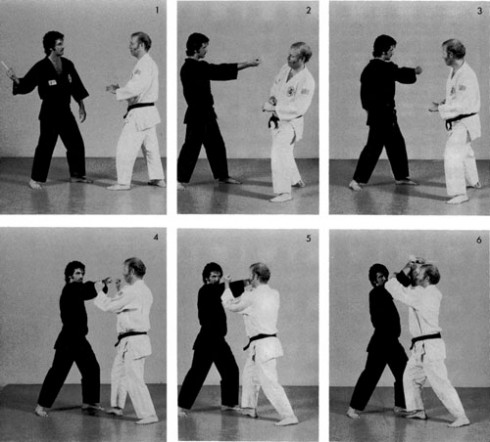
Image credit: BlackBeltMag.com
“Traditional Japanese Jujutsu descended from the arts the Samurai used effectively in life or death battles. Other than the possible use of a gun, fights today are basically as they were hundreds of years ago.It’s still a good method of self-defense..I have been practicing Japanese Jujitsu long before it became popular in the public and it has been effective for me in several street confrontations.” – Doris (Sourced from a Yahoo! Answers forum)
MUAY THAI
This celebrated national combat sport of Thailand is a dauntingly ruthless martial arts discipline that work effectively when used as a self-defense system. Commonly found within MMA training, with precise moves using knees, elbows, shins, and hands to deliver bone-crushing strikes, it is all about using our own body parts as weapons.
Reportedly to be originated in the 14th century in Siem, Thailand, Muay Thai is referred to as "The Art of Eight Limbs" as it focuses on eight points of contact, as opposed to "two points" (fists) in boxing and "four points" (hands and feet) used in kickboxing.
In terms of self-defense, This discipline emphasizes on teaching its practitioners how to effectively injure/ attack an opponent to make room for a quick getaway. Muay Thai moves are not restricted to uses of fists and feet as it also includes elbow and knee strikes that can devastate an adversary when executed.
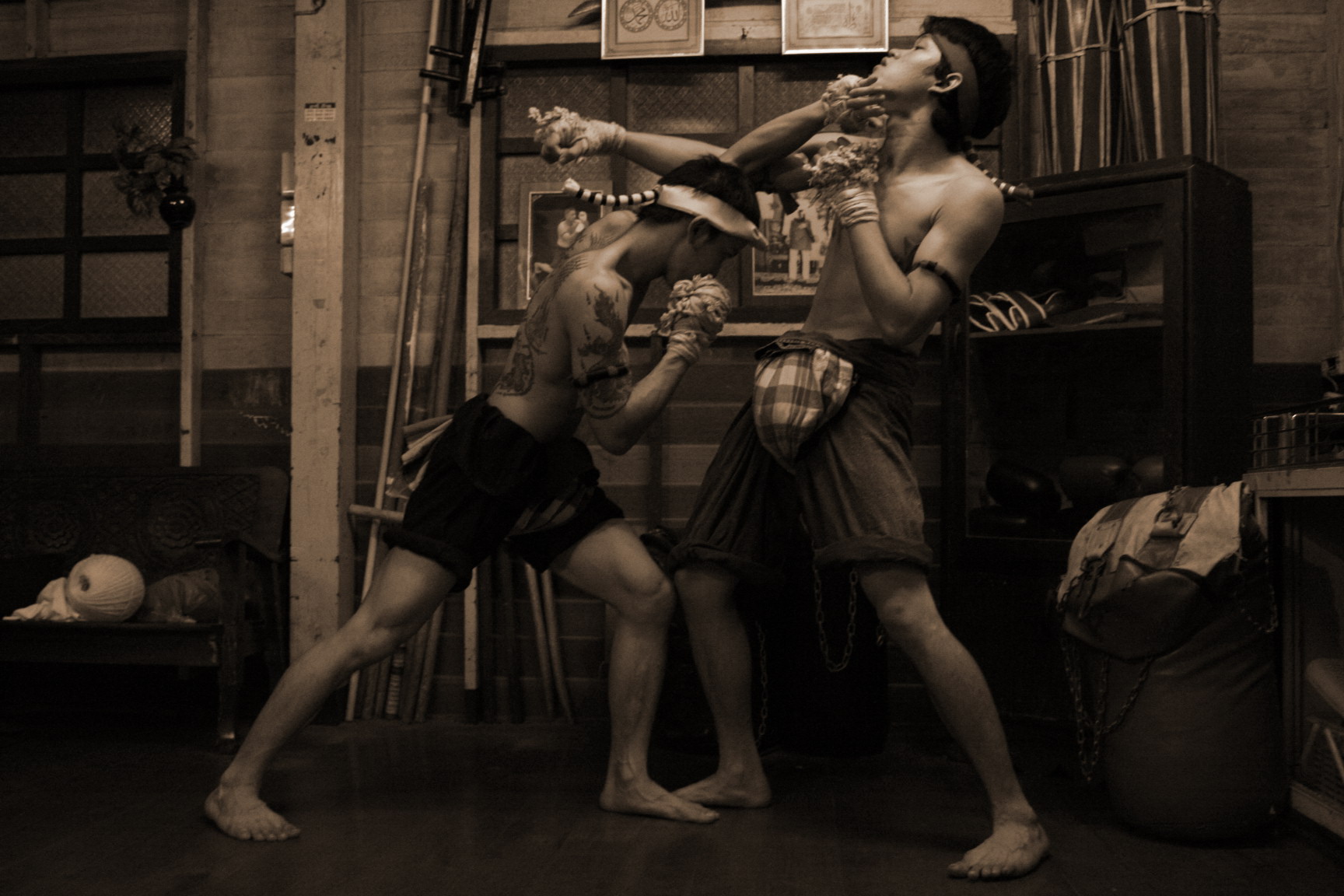
“I use the Muay Thai stance whenever I’m in need of self-defense. To me, it has a TON of advantages. First off, you in more of a defensive posture, about 60/40 or 70/30 weight on your back leg. Also, your hands are open in a Muay Thai fighting stance.
This does two things: 1. open hands are FAR more brutal that closed fists, and it offers a wider range of techniques. 2. This stance, with hands open, gives the appearance, to an untrained attacker that you are scared or trying to back away. It’s great for the passive aggressive fighter.” – Unknown (Sourced from a Reddit forum).
WESTERN BOXING
Although those who are not too familiar with boxing would argue that boxing is not a martial arts discipline, its practitioners would beg to differ. There is much more to boxing than punching each other’s face until someone decides to give up.
In Boxing, you’ll learn to deliver a variety of punches from different ranges with precision as well as how to effectively block or evade an attack. Unlike many other combat disciplines, it also emphasizes body conditioning through sparring, preparing the body for combat.
Additionally, Boxing training helps to sharpen awareness. This enables boxers to be able to react quickly, make fast decisions and choose the right moves to execute during a fight. These are definitely skills that not only come in handy in the ring but also in the streets.
“I am an American boxer. Years ago, I was walking down the street one night in college and two guys walking toward me block my path and tell me to give my wallet. One is about 6'2", the other about 5'9" (I am 5'7"). I told them to leave me alone and tried to walk around the big one. He pushed me back. At this point, I backed up and moved laterally, putting the big one between me and the little one. (I only wanted to deal with one threat at a time and biggest came first) so without wasting any time I threw a tight right hook to his head, which put him on his knees. I threw a right shovel hook to his lowered head and knocked him unconscious. Now his smaller friend, in a panic, fell back on the ground. He started to hit me in the back of the head, which from his position just felt like raindrops. I postured up and locked my right arm against his left shoulder before dropping my left forearm directly on his jaw, also leaving him unconscious.” – Unknown (Sourced from a Reddit forum).
AIKIDO
Though this martial arts discipline is arguably less popular than many others on this list, Aikido is considered one of the most effective martial arts to use when one is looking to learn self-defense and survival moves.
A modern Japanese martial arts style created by Morihei Ueshiba, it does not focus on punching or kicking the adversary. Instead, it focuses on techniques that enable you to use your opponent’s energy and aggressiveness to gain control of them or ‘throw’ them away from you.
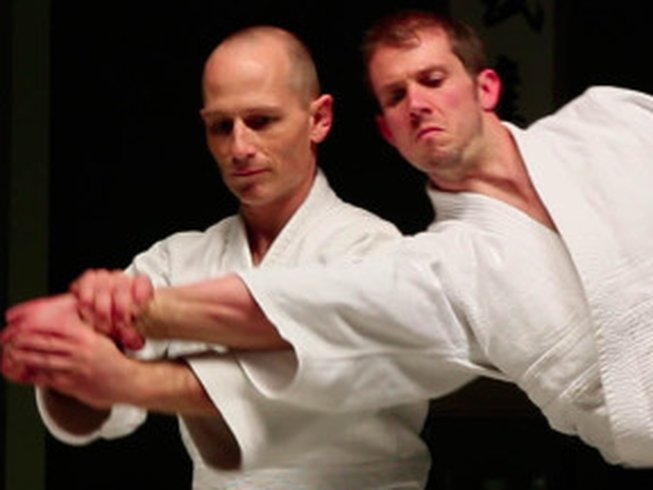
Image credit: Aikido Auckland Seishinkan
“I have a story that comes from a self-defense class that I teach. We were doing a simple version of kote-gaeshi , with myself as the "goon", who would attack the women in the class, so that they get a feel for doing things for real. Well, one of the students had learned it a lot faster than I thought and applied it a lot harder and faster than you usually see in regular Aikido classes (where I study, we usually "ease up" at the end, to allow our partner a chance to fall cleanly). She, of course, didn't ease up, because I had never thought to tell her she should. I managed to get about halfway into a break fall when I hit the ground, which just so happened to position the shoulder of the arm being twisted directly under the rest of my body. My entire weight came down on it, very hard. It ended up that I couldn't use that arm effectively for 2 to 3 weeks afterward.
I can only assume something similar would occur in real life, if you were to execute the technique at full speed, with the clear intention of ending the fight right there.Had it been for real, I'm pretty sure I would've chosen that moment for a strategic retreat. If she let me go, that is!” – David Green (Sourced from Aikidofaq.com)
Have a nice day, readers.
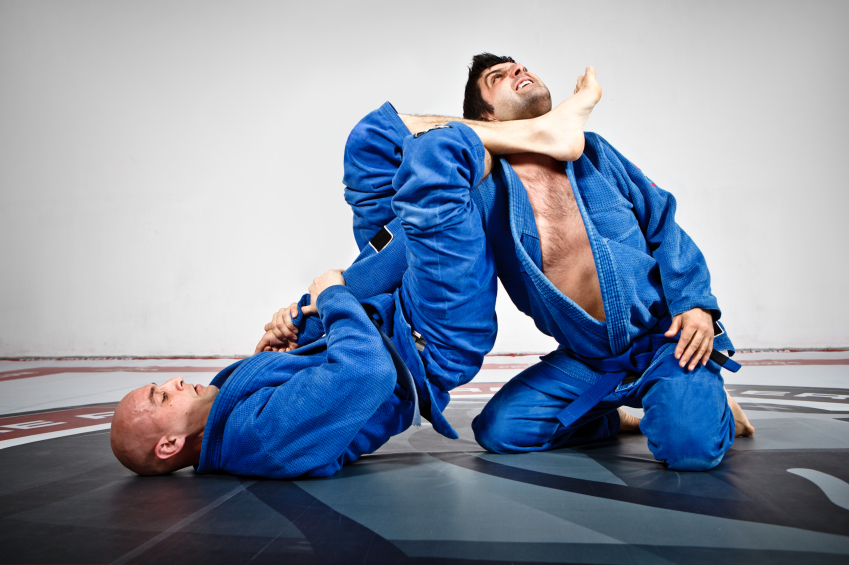
No comments:
Post a Comment